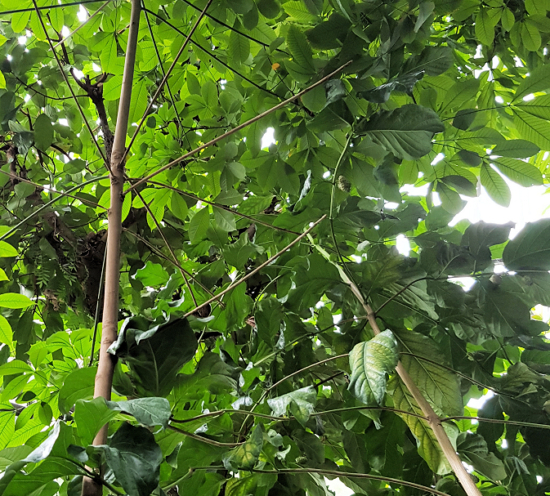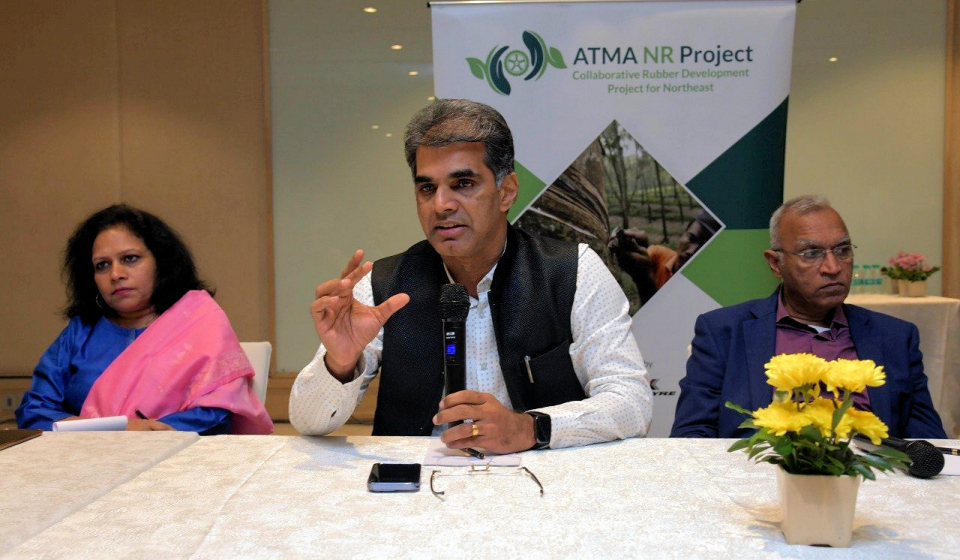Indian tyre makers investing to boost local rubber production
 NE-MITRA aims to expand cultivation to non-traditional areas (Photo: Tyrepress / Stephen Goodchild)
NE-MITRA aims to expand cultivation to non-traditional areas (Photo: Tyrepress / Stephen Goodchild)
According to Dr Sawar Dhanania, chairman of the Government of India’s Rubber Board, natural rubber production within the country “will not be sufficient to meet the consumer industry’s demands” in coming years. The Rubber Board observed 15.9 per cent growth in India’s tyre sector in 2021-22 following 3.2 per cent growth the previous year, and during an address delivered in August Dhanania shared the expectation that overall consumption will further grow by more than 20 per cent to reach 1.5 million tonnes by 2025-26.
Local production of natural rubber was just 775,000 tonnes in 2021-22, with the shortfall met by 546,369 tonnes worth of imports, 33 per cent more than a year earlier. The Rubber Board chairman thus sees an “urgent need” to increase the area under rubber cultivation. One means of achieving this is the North East Mission of Tyre Industry for Rubber Augmentation, or NE-MITRA. This joint project between the Rubber Board and tyre industry body the Automotive Tyre Manufacturers’ Association (ATMA) aims to expand cultivation to non-traditional areas.
Stakeholders provided an update on NE-MITRA at a roundtable meeting on 4 November. According to reportage from the Press Trust of India, Rubber Board executive director KN Raghavan confirmed the country consumed 1.23 million tonnes of natural rubber consumption in 2021-22, almost 60 per cent more than it produced. He added that consumption is expected to reach 2 million tonnes by 2030.
“On this backdrop, the ATMA came forward to increase domestic production of natural rubber,” he continued. “After a discussion among the stakeholders, we decided to launch a special scheme in Northeast India as it holds immense potential for rubber plantation due to the availability of land and suitable climatic conditions.”
KN Raghavan, executive director of India’s Rubber Board, addresses the meeting on 4 November (Photo: Rubber Board)
200,000 hectares over 5 years
Over the past year, the Rubber Board and ATMA have planted more than 1,650,000,000 rubber trees in northeast India. Their efforts are supported by ATMA members Apollo Tyres, Ceat, JK Tyre and MRF, who have pledged Rs 11 billion (£118 million) over a five-year period to plant 200,000 hectares of rubber plantations in the country’s North Eastern Region and West Bengal. ATMA chairman Satish Sharma describes this transaction as a “business investment,” noting that the collaboration of rubber consumers with government agencies to ramp up natural rubber production and availability is the “first of its kind project in the world.”
States in the northeast of India – Assam, Arunachal Pradesh, Manipur, Meghalaya, Mizoram, Nagaland, Tripura and West Bengal – currently produce 150,000 tonnes of natural rubber a year and contribute 18 per cent to the country’s total production. This share will rise to 32 per cent with the addition of the planned 200,000 hectares of plantation, and KN Raghavan anticipates that the region will produce 600,000 tonnes of natural rubber by 2032.
Output for entire rubber industry
The past year’s activities saw the ATMA transport planting materials from Kerala to the North East Region, a feat that Sharma described as a major logistical challenge. The association chairman, who is president of Apollo Tyres’ Asia Pacific, Middle East and Africa region, stressed that the NE-MITRA project will not only cater to the tyre industry. Although tyre manufacture uses 73 per cent of the natural rubber produced in India, Sharma stressed that although “we four companies have put in money, the output will be for the entire rubber industry.”
KN Raghavan adds that the project will boost socioeconomic conditions for smallholding farmers, as it is currently engaging farmers with land holdings of less than one acre, and the plantation of 200,000 hectares will therefore “directly benefit nearly 2.5 lakh (250,000) farmers and their families.”
The executive director explains that training and developing skills is a major component of the NE-MITRA project and covers the creation of infrastructure for training facilities as well as conducting training programmes for farmers and tappers on best practices and technologies.





Comments